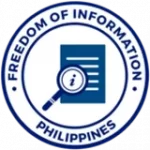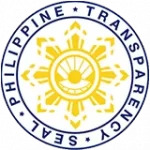Women’s Welfare Program (WWP)
Description
The Women’s Welfare Program is one of the regular programs of the Ministry of Social Services which aims to promote the welfare of disadvantaged women giving special attention to the prevention, eradication of exploitation of women in any forms as well as promotion of skills for employment and self-actualization.
When the Autonomous Region in Muslim Mindanao Government was established, the DSWD was devolved by virtue of Republic Act 6734, otherwise known as the Organic for Muslim Mindanao, as amended by Republic Act 9054 or the Expanded Autonomy as a result of the MNLF-GRP Final Peace Agreement of September 1996.
On October 28, 1990, the DSWD National turned over its powers and functions to ARMM. Thus, followed the setting-up of the Department of Social Welfare and Development of the autonomous region. The set-up of the then DSWD-ARMM’s regular programs were patterned from the previous set-up of the DSWD Central Office before its own re-engineering; thus the inclusion of the unit offices: the Family and Community Welfare Program (FCWP), Women’s Welfare Program (WWP), Child and Youth Welfare Program (CYWP), Disabled Persons Welfare Program (DPWP) and the Emergency Assistance Program (EAP).
However, as years passed by, the DSWD Central Office changed its setup considering the needs, scope, applicability, and appropriateness of the programs. Bureau on Protective Services, Policy and Programs Bureau, and others were established at the DSWD national level, while that of DSWD-ARMM remains as it is.
Below are the Terms of Reference of the five (5) program staff:
1. Program Design
Beneficiaries:
The target beneficiaries are the socially disadvantaged women between the ages of 18-59 years old who need social welfare services. These include women who have no access or limited opportunity for education, personal, maternal, and child care, livelihood, self-enhancement, and community participation, thus, deterring them from participation in development.
These women may be drawn from but not limited to any of the following groups:
- Mothers of children in Day Care Centers
- Women in Especially Difficult Circumstances (WEDC) such as:
- Victims of involuntary/forced prostitution/VIFP
- Victims of illegal recruitment/VIR
- Women in Detention /WD
- Women who are battered or abused/WBA
- Victims of Sexual Abuse/VSA
- Victims of Armed Conflict/VAC
- Distressed Overseas Filipinos
- Women in Emergencies (Evacuation Centers)
- Others (strandees, those tracing relatives)
The following indicators are considered in selecting, identifying, and prioritizing the beneficiaries:
- Women must be 18-59 years old
- Disadvantaged women
- Victims of Gender-Based Violence
2. Services and Strategies
- Service Flow Chart – (Please see attached)
- Reports and Documents Used
- Intake Sheet
- Informed Consent
- Referral Form
- Social Case Study Report
- Monitoring Form
- Work and Financial Plans
- Other Internal and External Reporting Forms
3. Documentation and Feed Backing
Reports and other programs’ documents are properly filed in a prescribed space and cabinets with consideration of confidentiality and safety. Feedbacking among WWP staff is conducted every month, submission of statistical and narrative reports every 25th of the month, and conducts of periodical monitoring and evaluation usually every semester and year-end.
4. Harmonization and Integration
The Women’s Welfare Program works closely with other regular programs within the MSS like the FCWP, CYWP, DPWP and EAP as well as with the banner programs like 4Ps, SLP, SFP, RRPTP, and RRJWC in terms of identifying beneficiaries, designing and planning of programs and projects, delivery and project implementation, monitoring and evaluation.
The Women’s Welfare Program specialist specifically is often times invited to trainings and workshops of both regular and banner programs to discuss Gender and Development; participated in the conduct of psychosocial activities; and served as resource person on GAD Training to various institutions like PNP, Philippine Army, schools, other ARMM and non-ARMM agencies.
The staff also participated in the relief operation during disasters and emergencies, and had supported the dissemination and delivery of other MSS’ programs and services.
The program also actively participated in the regional and national conferences /workshops conducted by partner agencies like DSWD Central Office, RCBW, UNFPA, UNICEF, other local and national government and international non-governmental.
5. Project Implementation
The program, because of its meager fund, has also provided non-monetary services like counseling services (for couples, youth, distressed women, and girls), referrals, and popularization of gender in the context of Islam. Psychosocial activities are also enhanced in partnership with the LGUs and other partners. Survivors of Gender-Based Violence, either in normal or in emergency situations, are assured of being served and provided with appropriate and necessary interventions. Assistance through financial means is also given. Other cases were referred to concerned agencies or MSS’ provincial offices for other support services. There are numbers of women who are beneficiaries of 4Ps, Sustainable Livelihood Programs (SLP), and PAMANA-CDD, and collaboration is anchored on advocacy and promotion of women’s rights, benefits, and privileges. Topics concerning women’s rights promotion were being discussed in the regular Family Development Sessions (FDS) of 4Ps, and some women lead the SLP and PAMANA community livelihood associations.


